Skeletons of Roman Family Discovered by University Freshmen Could Rewrite British History [PHOTOS]
Bournemouth University's first-year archaeology undergraduate students have stumbled on a discovery that could rewrite the history of late-Roman Britain – the discovery of a family of skeletons located close to the site of a Roman villa in Dorset.
The researchers and students have been excavating fields in Winterborne Kingston, northern Dorset for the last six years as part of the Durotriges Project, which looks at the transition from the late Iron Age to the early Roman period in southern England.
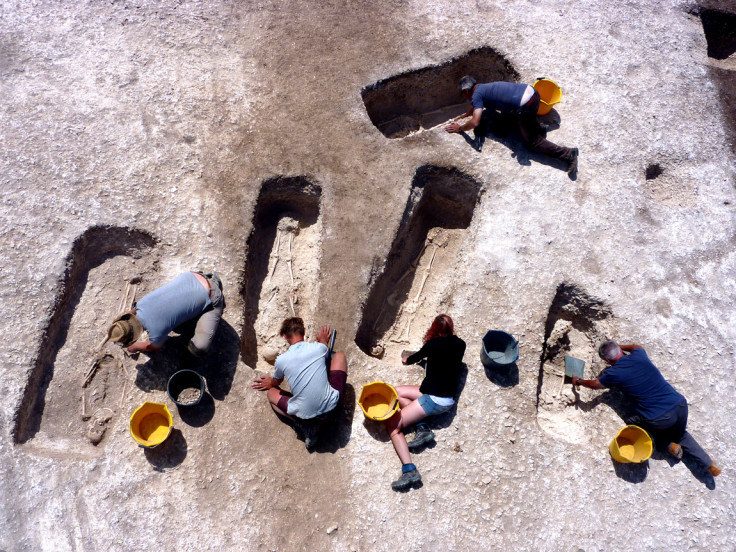
Last year a Roman villa was found, and just a week ago, first-year students discovered the remains of a timber mausoleum containing the graves of five skeletons, just 90m away from the villa in the next field.
"900 Roman villas have been dug up and recorded in the last 300 years, but investigations have mostly been around the main house," Dr Miles Russell, Senior lecturer in archaeology at Bournemouth University tells IBTimes UK.
"It's always been impossible to say anything about their state of health, how they died, which part of the empire they're from, because the cemeteries are situated quite a way away from the main house, by the side of the road so that the dead can always be seen and remembered."

The five individual graves are all aligned to the north and slope downhill, leading archaeologists to believe they belong to the same family over three generations in 70 years.
The bodies found date back to between 300-350 AD, the same time as the villa was built, and geophysical surveys of the area shows a flint and stone pathway leading from the villa directly to the mausoleum in the next field.
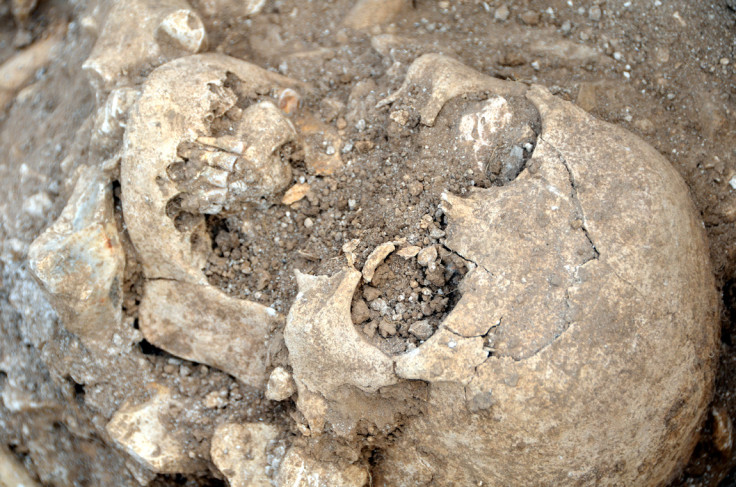
The bodies consist of one elderly female in her 70s, two middle-aged females and two middle-aged males.
The females are buried with pottery drinking vessels, and weaving equipment like spindle whorls, while the men are buried wearing hobnailed shoes. No timbers used in the construction of the mansoleum or fibres from fabrics have survived.

Interestingly enough, although the grave contents are all in a relatively good condition, but there is no jewellery in the graves, which Russell says is a sign of the times.
The villa was built during the height of the Roman Empire, just before the economic collapse, and the archaeologists believe that jewellery may have been kept by descendants as heirlooms instead of being buried with the dead, and eventually the final owners of the villa may have had to flee when the Roman Empire fell.
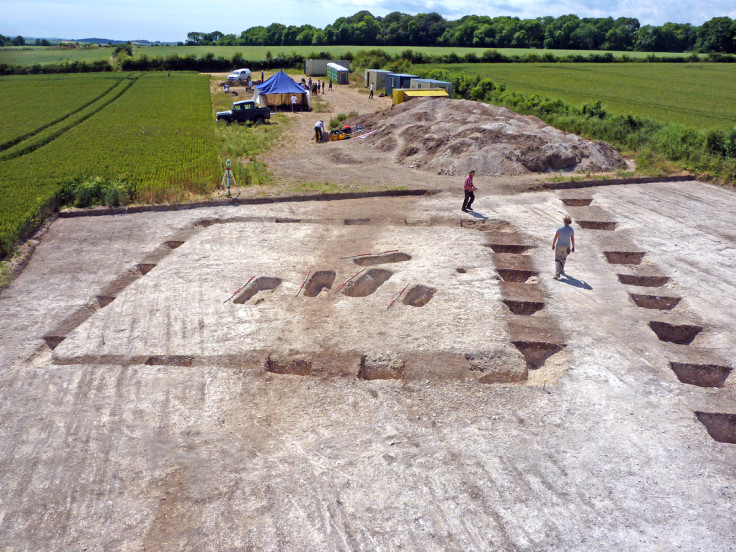
The site of the villa is a different story, however.
"At the villa we found brooches, coins, pottery and window glass," says Russell.
"The Romans were extremely wasteful, they were the ultimate consumer society. They throw all their rubbish around them and don't recycle, so whenever you find a Roman site, it's packed full of broken pottery, coins, animal food remains and is one of the best archaeological sites you can have."
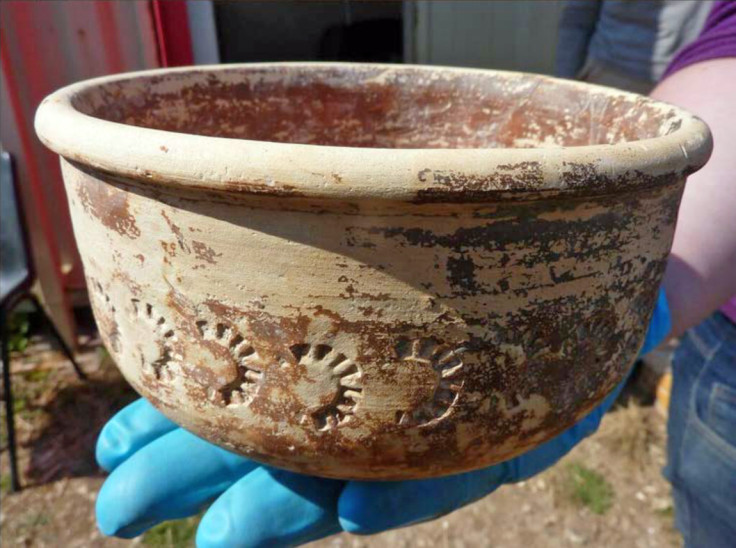
Even more interesting – below the villa, the archaeologists found a late-prehistoric cemetery in 2012 with 48 skeletons dating back to 50-100AD, which had been completely forgotten by the time the villa was built.
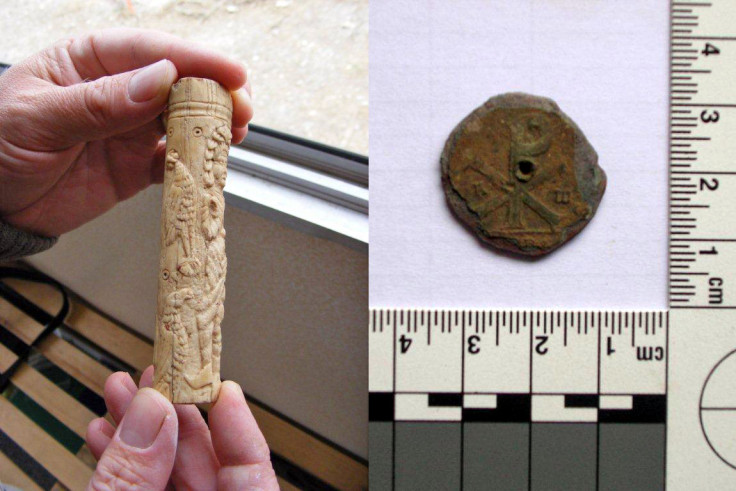
"Now we've got the villa owners, we can look at the DNA between the prehistoric burials and the Roman burials – are the people who lived in the villa the descendants of the people who were farming here when the Romans arrived, or are they economic migrants from another part of the Roman Empire?" Russell says.
While Bournemouth University hasn't found any treasure in their years of digging around rural Dorset, they have found many interesting objects at the site of the villa, including a camel-bone-decorated knife from Egypt and a Christian pendant, which was quite rare in Roman Britain.
Russell said that it was quite interesting how far-reaching the cross-continent trade market was during Roman times, for them to find a knife from Egypt in the middle of rural Dorset.
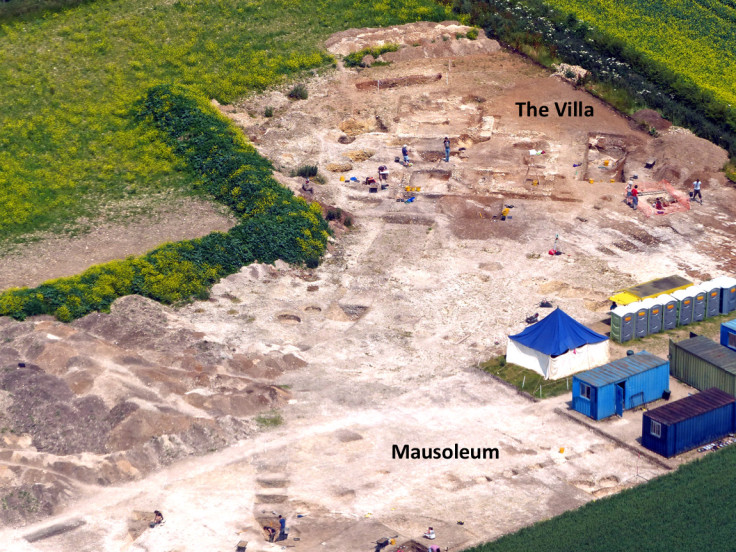
The archaeology degree programme at Bournemouth University teaches first year students excavation techniques and they are supervised at digs by second year students, who also carry out geophysical surveys of the land using resistivity meters that create a virtual picture of what lies beneath the ground using low-level electrical currents.
Final year students analyse the artefacts and remains found for their final-year dissertations and have the opportunity to see their work featured in research papers published in peer-review academic journals.
© Copyright IBTimes 2025. All rights reserved.




















